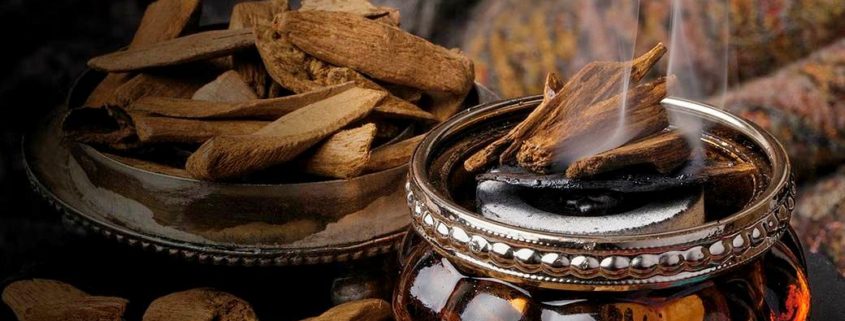Is Agarwood the same as Oud?

Both terms “Oud” and “Agarwood” are highly valued in the perfume world and are often used interchangeably even though they are not the same elements, but they come from the same source, Aquilaria trees. Oud and Agarwood are different elements, both of which come from the Aquilaria trees. You’re in the right place if you’re a perfume enthusiast or just curious to know more about Oud.
In this article, we will demystify the difference between Agarwood and Oud in a bit of detail. But before we get started to answer the query – is agarwood the same as oud? It’s important to learn the basics of oud a little bit more. So, let’s get started.
Table of contents
-
What is agarwood?
-
Different grades of agarwood
-
What is oud?
-
Why do Muslims wear oud?
-
What does agarwood smell like?
-
Why is agarwood illegal?
-
Why is agarwood so expensive?
-
Beware of synthetic alternatives to oud and agarwood
What is agarwood?
Agarwood, also called oudh or oud, is a precious and rare form of resinous heartwood, particularly infected by specific types of mold, derived from the agarwood trees, specifically belonging to the plant genus Aquilaria. Native to Southeast Asia, Agarwood trees are mostly found in dense forest areas of tropical regions, particularly in countries such as India, Indonesia, Thailand, and Vietnam.
Interestingly, this wood remains unnoticeable unless or until it is injured or infected by certain types of molds. This injury or infection triggers a significant change in the tree, which is a natural defense mechanism, resulting in the formation of a dark, dense, and distinct aromatic resin within the heartwood of the tree. It is a long and time-consuming process that might take years or even decades for resinous heartwood to mature after the tree gets injured or infected. This is the reason why natural agarwood is rare and precious in the world. Its unique and rich fragrance has been valued for thousands of years, making it a coveted resource in the global perfume industry.
However, the non-infected woody parts of the agarwood trees are also considered agarwood by some people as well, while the infected aromatic heartwood of the trees is considered oud or oudh.
Different grades of agarwood
The quality of agarwood widely varies depending on various factors such as the level of infection, the age of the wood, and most importantly the strength of the scents it holds. The grading system could be complex depending on the regions from where it is sourced and the traders that distribute it. However, in general, the grade spans from low-quality agarwood type, which is suitable for producing wood chips that are used as incense, to the highest grade agarwood type which is highly prized and used for producing luxurious perfumes and oud oils. Let’s jump into the discussion on exactly what oud is.
What is oud?
Oud, also known as aguru or oudh, is one of the most prized ingredients in the global perfume industry. It is extracted from the resinous, aromatic heartwood of the agarwood trees when it gets injured or infected by certain types of molds. This is a natural defense process of the tree to heal its wound on its own naturally, which creates a dark resinous fragrant material highly valued for its distinct scent for thousands of years.
Why do Muslims wear oud?
Over the years, oud has become capable of holding a strong cultural significance, especially in Islamic cultures of Arab countries such as Saudi Arabia, Qatar, Oman, Egypt, Kuwait, and Jordan just to name a few. In these Muslim countries, oud is widely used as a premium ingredient in incense and perfumes. The production of oud is quite complex and costly, making it one of the most expensive perfume ingredients throughout the world.
Muslims wear oud for several reasons rooted in religious, cultural, and social practices. Here are some key points:
- It is a Sunnah (tradition of the Prophet Muhammad, peace be upon him) Allah’s Messenger was quoted (by Abu Huraira) describing Paradise where, among many wondrous things, agarwood would be used in their censers (incense burner). This hadith (Prophet’s saying) highlights the significance of oud as one of the preferred fragrances in Islam.
- Religious Significance: In Islam, cleanliness and good hygiene are highly emphasized. Wearing pleasant scents like oud is considered a part of personal self-care and cleanliness. It is believed to be a Sunnah (tradition) of the Prophet Muhammad, who was known to have used and recommended pleasant fragrances. Allah’s Apostle Muhammad said, “Anyone who takes a bath on Friday and cleans himself as much as he can and puts oil (on his hair) or scents himself; and then proceeds for the prayer and does not force his way between two persons (assembled in the mosque for the Friday prayer), and prays as much as is written for him and remains quiet when the Imam delivers the sermon, all his sins in between the present and the last Friday will be forgiven.”
- Cultural Tradition: Oud has been used for centuries in many Muslim-majority cultures. It is often worn during special occasions such as weddings, religious festivals, and gatherings. It holds a place of honor in cultural practices and is often passed down through generations as a cherished tradition.
- Spiritual Benefits: Many Muslims believe that wearing oud has spiritual benefits. The scent is thought to elevate one’s spiritual state, create a calming atmosphere, and aid in focus during prayers and meditation.
- Social Etiquette: In many Muslim communities, wearing a good fragrance like oud is considered polite and respectful, especially when meeting others. It shows consideration for the comfort and enjoyment of those around you.
- Medicinal Uses: Historically, oud has been used in traditional medicine for its health benefits, including its use as a natural remedy for various ailments. This traditional knowledge has contributed to its continued popularity.
Overall, wearing oud is a multifaceted practice that combines elements of religious adherence, cultural heritage, personal hygiene, and social etiquette.
What does agarwood smell like?
Oud has been valued for centuries for its unique and fascinating scent and is highly prized in the natural perfume composition sphere. Although the nature of the fragrance is literally inexpressible, it is often described as rich, woody, and musty, with a slight taste of sweetness, making it one of the most coveted base notes in perfumes. It provides an in-depth long-lasting aroma that is both comforting as well as exotic.
In perfumes, oud is commonly used in its oil form, mostly known as oud attar. Oud attar can be directly applied to the skin for a long-lasting natural aroma that can integrate with the body’s chemistry harmoniously, enabling to creation of a distinctive scent for every individual. The scent of oud is also able to seamlessly blend with other perfumes, offering a desirable note that can elevate and enhance perfume blends.
Why is agarwood illegal?
For its distinct fragrant heartwood, agarwood trees have been overexploited throughout its range, threatening its population. This is the reason why agarwood is classified as an endangered species in many parts of the world. For this reason, artificial cultivation is encouraged and found in certain areas such as the northeastern part of India, particularly in the state of Assam. However, the Export-Import policies of certain areas wanted to restrict the trade of agarwood, making it illegal in some areas.
Why is agarwood so expensive?
Agarwood is highly expensive for several reasons. Common reasons include:
- Rarity – Not all Aquilaria trees can generate agarwood. Estimates suggest only 2% to 7% of trees can produce agarwood after getting injured or infected.
- Labor-intensive process – From harvesting trees to extracting oud oils, the process is highly complex and labor-intensive, requiring a lot of time, effort, and expertise.
- Sustainability – Aquilaria trees are classified as endangered species for overexploiting, habitat destruction, and illegal logging. To protect the species, there are strict regulations, making it more difficult as well as expensive to collect agarwood legally.
- Varied quality – The quality of agarwood widely varies depending on the age of the heartwood, the level of infection, its location, and the method used to extract the oils. The highest quality agarwood is one of the rarest materials in the world, making it more expensive.
- High demand – In the Middle East countries, agarwood has been highly valued in traditional medicine, incense, and perfumes for thousands of years. The demand for agarwood is increasing day after day and today, the demand is more than ever, making it one of the most precious ingredients in the world.
Beware of synthetic alternatives to oud and agarwood
Technological advancements have led to synthetic alternatives that can mimic the notes of natural oud or agarwood, but they lack in their nuanced quality by far. Real and natural oud or agarwood are prized for their traditional significance, authenticity, and perceived luxury, resulting in the rise of the market of natural perfumes featuring scents of real agarwood and oud oils.
Final words
Oud and agarwood are often used interchangeably, but they are not the same.
They are different elements that come from the same source, Aquilaria trees.
Oud is the aromatic resin generated within the heartwood only in response to an injury or infection, while agarwood is considered the non-infected wood of Aquilaria trees.
However, oud is highly prized for its deep, smoky scent and cultural significance, especially in Muslim cultures. Authentic oud has been valued for its tradition and complexity in perfume compositions.
Our Natural and Authentic Oud Perfumes
SEE ALSO:





















Leave a Reply
Want to join the discussion?Feel free to contribute!